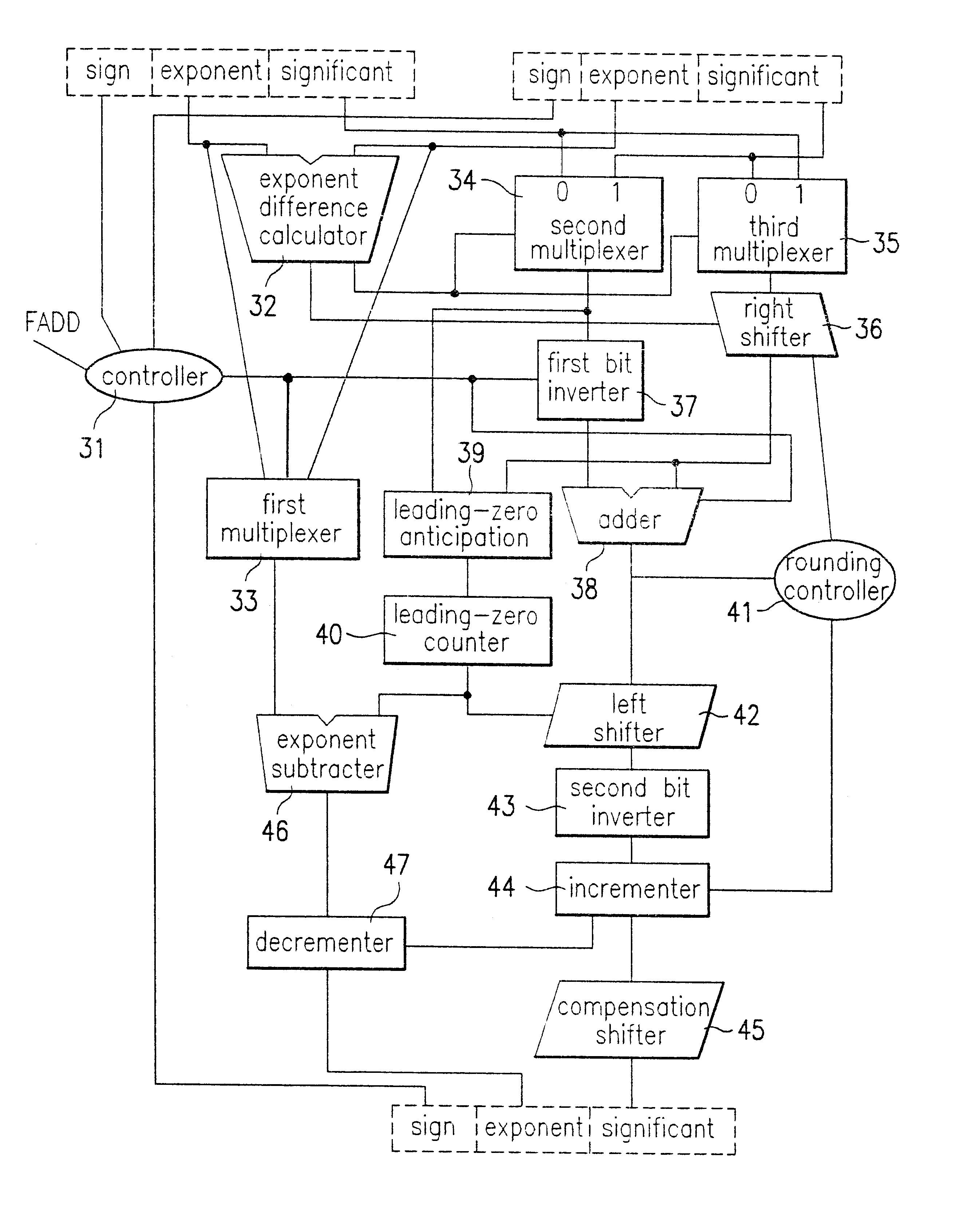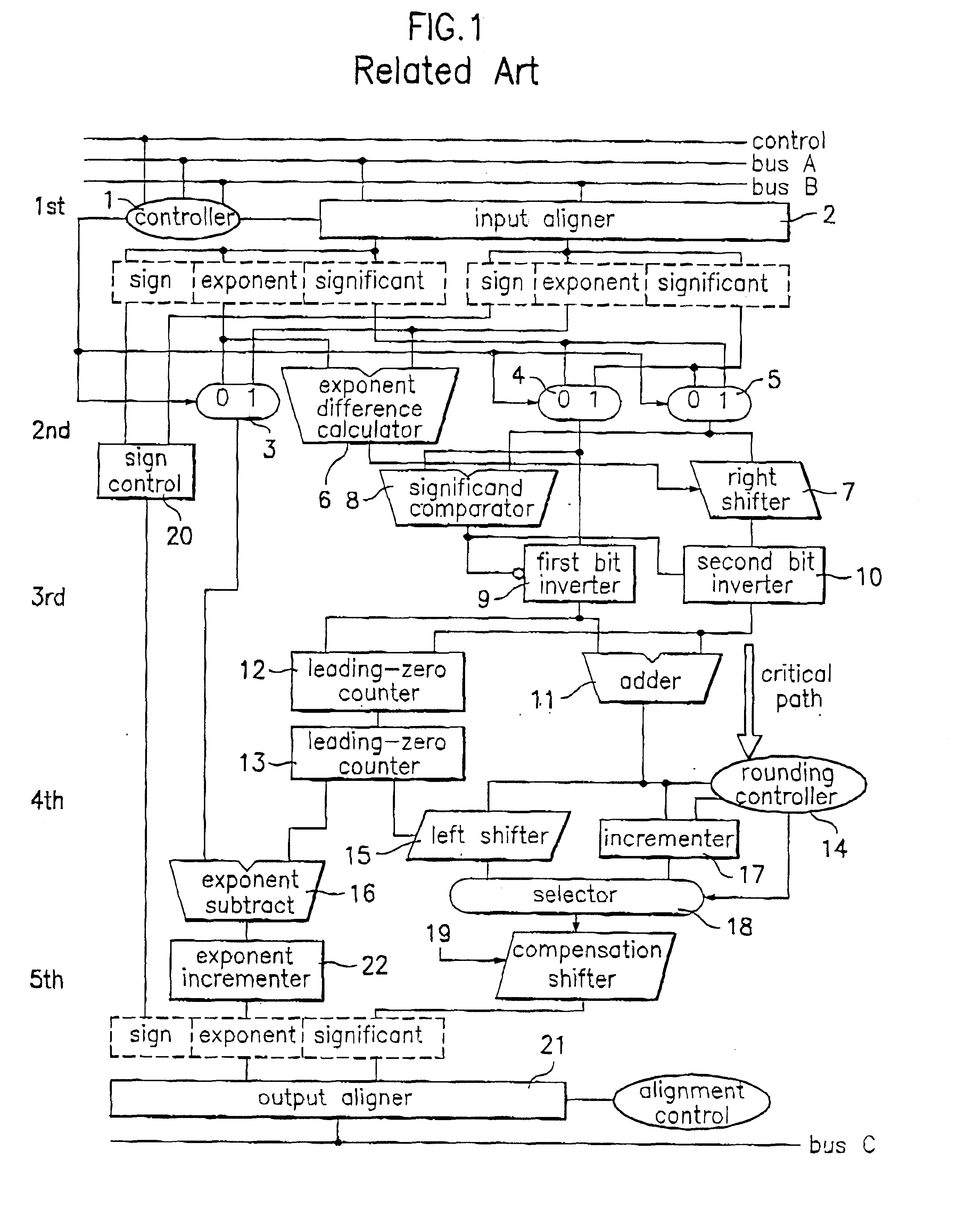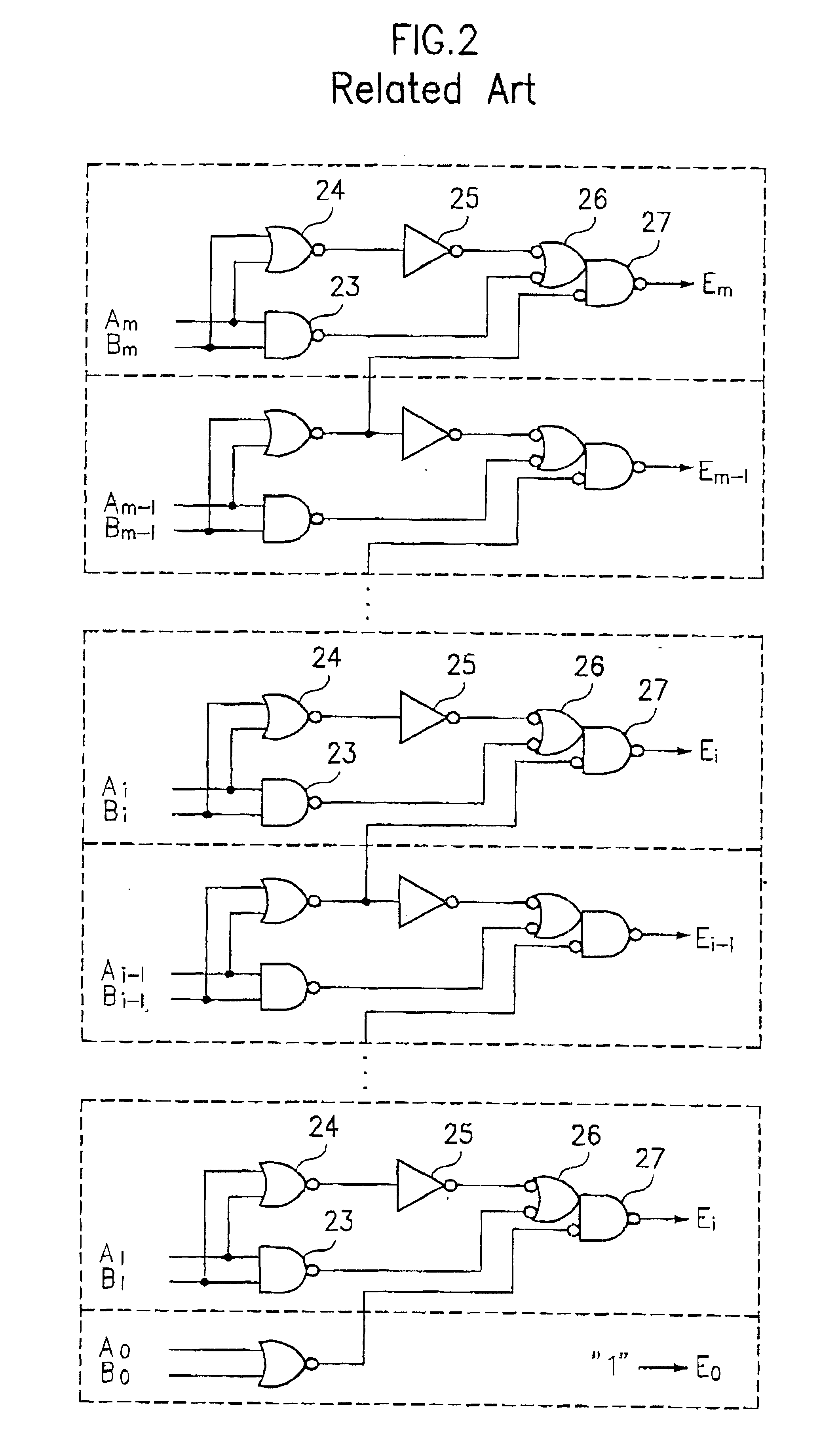Floating-point arithmetic device
a technology of floating point and arithmetic device, which is applied in the direction of data conversion, instruments, and processing data according to predetermined rules, etc., can solve the problems of reducing operation speed and complicated circuit construction
- Summary
- Abstract
- Description
- Claims
- Application Information
AI Technical Summary
Problems solved by technology
Method used
Image
Examples
second example
Assuming that the calculation condition of two significands is 10110000-10101110, the output data from the leading-zero anticipation circuit 39 is 11111101. Calculating the above calculation condition in practice, the result is 00000010.
As seen from the first and second examples, there is a coincidence between the actually calculated value and the anticipated value from the leading-zero anticipation circuit 39.
However, in some cases, there may be no coincidence between the actually calculated value and the anticipated value from the leading-zero anticipation circuit 39.
third example
Assume that the calculation condition of two significands A and B is A-B, where A is 10100001 and B=10001001.
The significand B is inverted into 01110110 by the first bit inverter 37. Because the two significands A and B have the same exponent, the right shifter 36 outputs the significand B, 10001001, as it is.
Hence, the leading-zero anticipation circuit 39 outputs 11010111, which is transferred to the leading-zero counter 40. As a result, the leading-zero counter 40 counts "2".
The adder 38 adds the output value from the first bit inverter 37 and the output value from the right shifter 36 while receiving "1" from the controller 31 as a carry-in signal. Consequently, the adder 38 outputs data of 00011000, which is transferred to the left shifter 42. Because the count of the leading-zero counter 40 is "2", the left shifter 42 shifts the output value from the adder 38 to the left by 2 and thus provides its output of 01100000.
Since the output of the left shifter 42 is not negative, it is...
PUM
 Login to View More
Login to View More Abstract
Description
Claims
Application Information
 Login to View More
Login to View More - R&D
- Intellectual Property
- Life Sciences
- Materials
- Tech Scout
- Unparalleled Data Quality
- Higher Quality Content
- 60% Fewer Hallucinations
Browse by: Latest US Patents, China's latest patents, Technical Efficacy Thesaurus, Application Domain, Technology Topic, Popular Technical Reports.
© 2025 PatSnap. All rights reserved.Legal|Privacy policy|Modern Slavery Act Transparency Statement|Sitemap|About US| Contact US: help@patsnap.com



